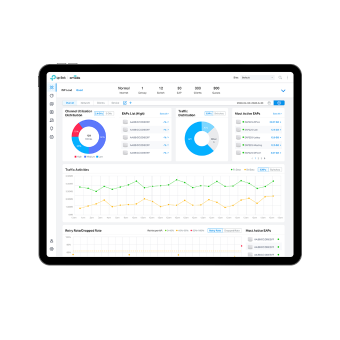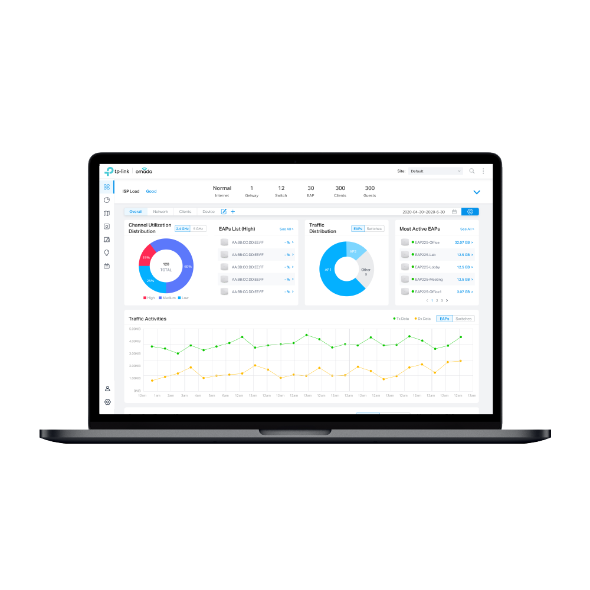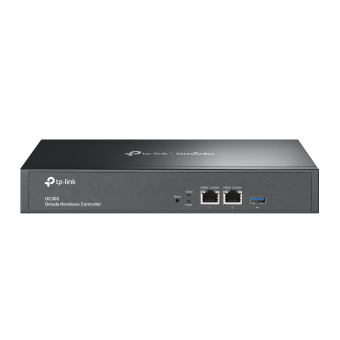The differences and commons of three Omada Controllers
This article applies to: Omada Software Controller, Omada Hardware Controller and Omada cloud-based Controller.
Introduction:
Omada Controller has 3 different types: Software, Hardware, and Cloud-based at present.
This article would help you to know the differences and commons of them and help you to choose the most suitable type.
Basically, the differences and commons of these 3 controllers can be simply demonstrated as below:

* Actual management scale of the Omada Software Controller depends on the PC/server’s hardware specifications.
**Please go to https://www.tp-link.com/en/omada-cloud-based-controller/product-list/ to confirm which models are compatible with Omada Cloud-Based Controller.
For more information about their differences and commons in detail, please check the following:
Commons:
Omada’s Software Defined Networking (SDN) platform integrates network devices, including access points, switches, routers, and gateways to provide a 100% centralized management system. Omada creates a highly scalable network—all controlled from a single interface, the Omada SDN Controller., including these 3 different types: Software, Hardware, and Cloud-based.
Differences:
- Omada Software Controller gives you control of the whole network wherever you are through the Omada app or Web UI via cloud access, without any additional service subscription fees nor hardware investment.

Note:
Requirements of PC specifications for running Software Controller (When managing 1,500 devices or above)
- CPU: Number of core>2 / number of threads ≥4, i3 8100 and above, i5 6500 and above, i7 4770 and above models are recommended.
- RAM: >6GB
- System: Windows 7/8/10/Server, 64-bit Linux operating system (Ubuntu 14.04/16.04/17.04, CentOS 6.x/7.x, Fedora 20 or above, Debian 9.8)
- Browser: Mozilla Firefox 32 or above, Google Chrome 37 or above, Opera 24 or above, Microsoft Internet Explorer 11 or above
- An on-premises hardware controller is built into the product with no need to run a PC or server, allowing you to remotely control the whole network wherever you are with cloud access. Locally manage devices with the ultimate security and stability.

- Omada Cloud-Based Controller (CBC), existing entirely in the cloud for the Omada SDN platform, which provides centralized cloud management of gateways, routers, switches, and access points from a single interface.
Compared to a hardware controller, like the OC200, CBC eliminates the need for additional hardware investments and installation at customer premises. It supports unlimited centralized management scale, supports efficient deployment with Zero-Touch Provisioning (ZTP), and reduces the overall cost of deployment, operation, and maintenance.

Different methods to add devices on Omada Controller:
- For both Omada Software and Hardware Controllers:
How to adopt EAP in Controller Mode (this applies to other Omada devices like gateway and switches)
https://www.tp-link.com/support/faq/2580/
- For Cloud-based Controller only (Zero-Touch Provisioning: There’s no need to send out an engineer for on-site configuration):
How to Add Omada Devices to Omada Cloud-Based Controller:
https://www.tp-link.com/support/faq/3387/
Different supported devices on different Omada Controller:
To help you to choose the right Omada devices to work with your Omada Controller, please refer to the following compatibility lists:
- Devices supported by cloud-based Controller:
https://www.tp-link.com/en/omada-cloud-based-controller/product-list/
- Devices supported by both Software and Hardware Controllers:
Is this faq useful?
Your feedback helps improve this site.
TP-Link Community
Still need help? Search for answers, ask questions, and get help from TP-Link experts and other users around the world.










